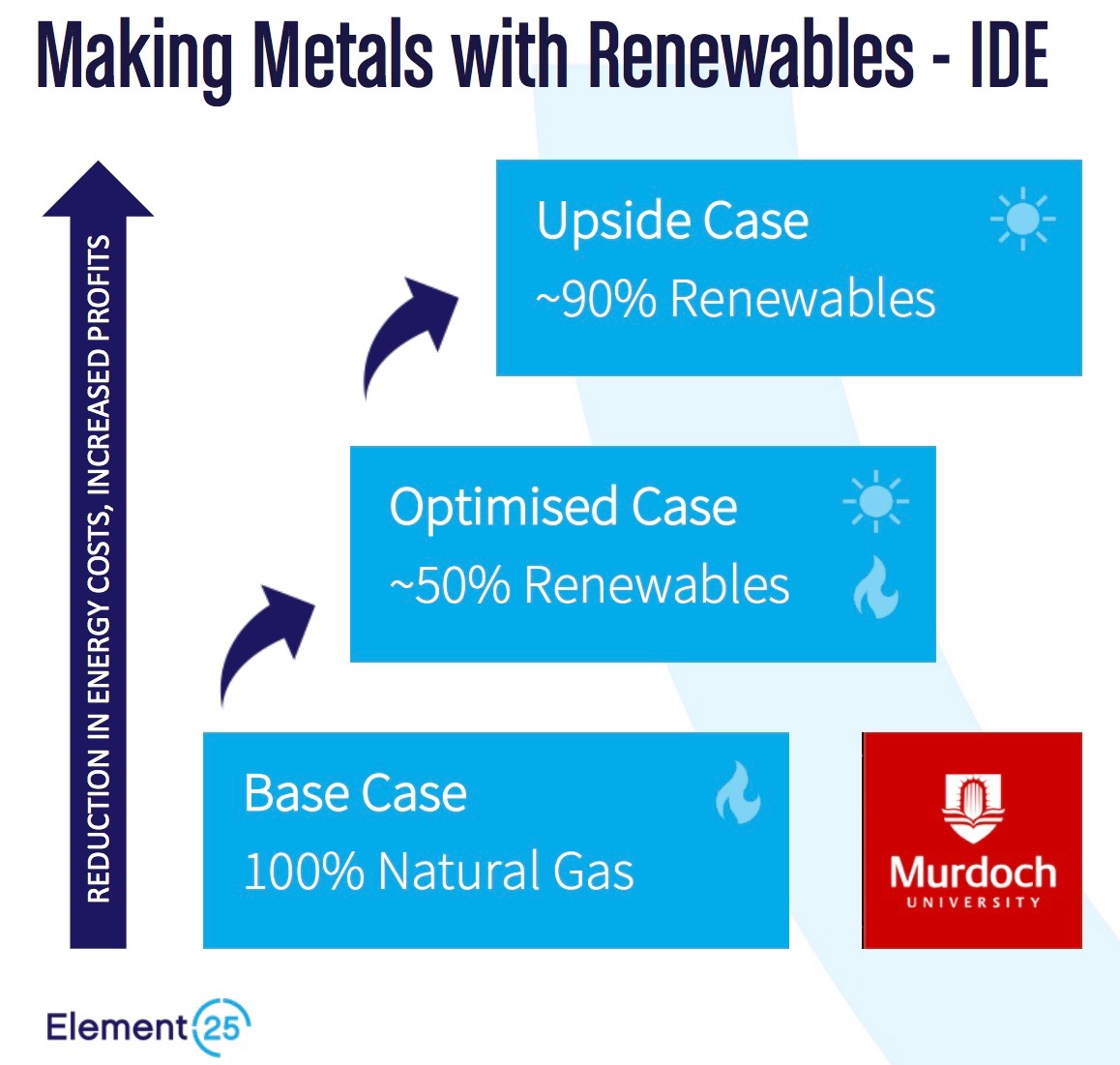Australian mining company Element 25 (the 25th element being manganese), has secured $2 million of standby equity capital for the development of the Butcherbird High Project in the Pilbara, a high purity manganese mine with the potential to use renewable energy to produce manganese sulphate for lithium ion battery cathodes at an export price that can compete with Chinese manufacturers.
Key to Element 25’s (E25) project is renewable energy to bring down the price by powering the electrowinning processes in the production of Electrolytic Maganese Metal (EMM), without reducing the quality of the product.
In March 2019, the Australian Renewable Energy Agency (ARENA) announced $490,000 in funding to E25 to examine the viability of using renewable energy in their metal production process. It seems the funding was well spent as E25 is looking to maximise its renewable penetration.
“With a long term PPA,” says E25 in its March 2020 “Renewables and Resources” update, “renewables are now significantly cheaper than gas generation.” And nor is E25 bludging on the tech, the miner plans to use real-time wind and solar data collected on-site via a Triton SODAR for vast and varied sampling.
E25 expects the energy mix of the project to be 50% wind and solar and 50% gas, although it is considering tilting that split with more renewables. After all, more renewables, lower the cost. “Renewable energy powered electrowinning of metals embeds the renewable energy into the product for export,” says E25, a company firmly in the belief that Australia can become a leader in renewable energy exports.
Indeed, E25’s robust scoping study has found that there is an appetite for non-Chinese supply in Korea, Japan, the U.S., and the EU.
The project, which straddles the Great Northern Highway and the Goldfields Gas Pipeline in the Pilbara, will look to utilise the $2 million of capital, acquired through the entering of a Controlled Placement Agreement (CPA) with Acuity Capital, to further confirm the commercial viability of the mine through the next phase of pilot testing.
“A cleaner, lower carbon flowsheet and high penetration renewable energy will place Butcherbird at the forefront of sustainable metal production,” said the company in a statement.
E25 is part of a growing shift toward renewables in the mining industry. Last month, Rio Tino approved the construction of a large-scale solar PV and energy storage system for its Koodaideri mine in Western Australia. When completed, the solar plant will be one of the largest PV installations on an Australian mine.
Of course, Rio Tinto is not the only mining giant to make the switch to renewables in the Pilbara. In a landmark agreement with Alinta Energy late last year, it was announced that Fortescue Metals would use solar power for up to 100% of its daytime energy needs at its Chichester Hub iron ore operation.
Two other Western Australian mines have announced their shift to renewables earlier this year. Agnew Gold Mining is installing an 18 MW wind farm, a 10,000 panel 4 MW solar farm and a 13 MW / 4 MWh battery storage alongside a 16 MW gas engine power station, while a 2.5 MW wind farm, a 1 MW solar farm and a 2 MW / 0.5 MWh battery which will provide up to 70% of the electricity needs of a nearby garnet mining and processing plant run by GMA Garnet.
This content is protected by copyright and may not be reused. If you want to cooperate with us and would like to reuse some of our content, please contact: editors@pv-magazine.com.









By submitting this form you agree to pv magazine using your data for the purposes of publishing your comment.
Your personal data will only be disclosed or otherwise transmitted to third parties for the purposes of spam filtering or if this is necessary for technical maintenance of the website. Any other transfer to third parties will not take place unless this is justified on the basis of applicable data protection regulations or if pv magazine is legally obliged to do so.
You may revoke this consent at any time with effect for the future, in which case your personal data will be deleted immediately. Otherwise, your data will be deleted if pv magazine has processed your request or the purpose of data storage is fulfilled.
Further information on data privacy can be found in our Data Protection Policy.